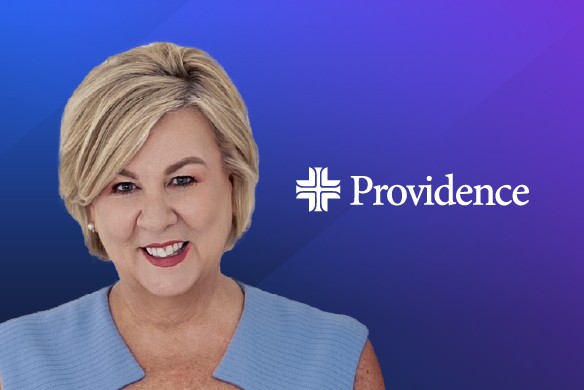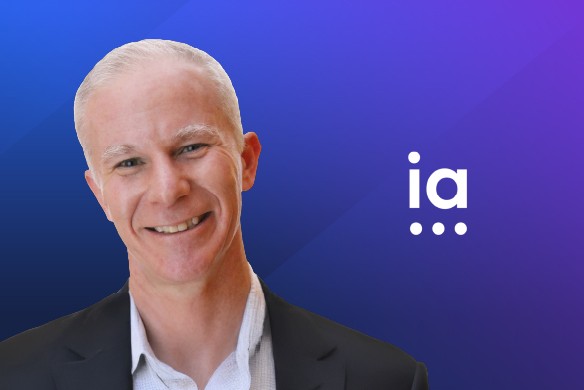With over two decades of experience at Deloitte and Commonwealth Bank, James Elliott is known for leading high-performing teams and leveraging data and technology to deliver exceptional experiences. Driven by a visionary mindset, he has a proven record of using the Avature platform to stay ahead of the recruiting curve. One example of this was the early adoption of Avature CRM fourteen years ago while he was at Deloitte.
We were lucky to have Elliott at our #AvatureUpfront APAC conference in Sydney, where he sat down with our CEO, Dimitri Boylan, to explore this exciting time to be in recruiting, which he defines as “the cusp of another really significant change.”In their conversation, Elliott provided insights into the evolution of talent acquisition (TA) and shared advice to overcome a pain point many HR organizations experience: not participating in strategic workforce planning. He explored how technology, skills and programs like internal mobility, combined with data, can help HR get a seat at the workforce planning table. Let’s dive in!
Incorporating New HR Technology Today
While both Elliott and Boylan emphasized that recruiting software tends to be towards the cutting edge of most HR technology stacks, both admit that it can be challenging to cut through the hype when it comes to assessing the latest and greatest solutions available.
This problem is exacerbated today by high-profile developments, such as artificial intelligence (AI), that have entered the mainstream and dominated the conversation. No technology is a silver bullet, which is why you need to deeply understand the problem you’re trying to solve to assess whether it can fix it.
“I think [approaching AI] has to start with what’s the business problem you’re trying to solve. I see a lot of people out there finding a solution in search of a problem. There’s a lot of bright, shiny objects. (…) There seems to be a lot of rebadging of what maybe would have been called automation technology in the past as well.”
James Elliott
Talent Thought Leader
It’s also essential to assess the vendors’ credentials and understand each technology’s integration capabilities. These are critical considerations for large enterprises with complex stacks that need to avoid building up technical debt and deploying a mix of point solutions that don’t realize value.
Skills are a good example of this problem. The “common currency of skills is not so common in real life” because each system has its own ontology and functionality around skills. Companies lack an underlying framework that ensures skills are inferred, translated and understood across all of those data points.
While not all that glitters is gold with AI, it does have the potential to bridge this gap between different skill ontologies through innovations such as matching. At the same time, it can enhance automation across multiple touchpoints of recruiting and your broader talent programs.
“You mentioned a good thing there which is the ability to translate from one set of skills to the other. Actually, part of the solution to that is the ability to use AI to match one ontology to another so that you can have a currency that is flexible enough that it works in one system and it works in another. For a lot of our customers, it’s not an option to rebuild the entire stack.”
Dimitri Boylan
Avature Founder & CEO
By carefully examining the problem you want to solve, you can better identify those areas where new technology, such as AI, can add true value. And, by working closely with an architect to think about long-term opportunities and challenges with new solutions, you can get a firmer grasp on data flows and deploy solutions to support a platform approach.
HR and Strategic Workforce Planning
The need for the HR function to be closely involved in strategic workforce planning as early as possible has accelerated significantly over the last few years.
With many organizations pivoting to flexible location strategies after the pandemic, Elliott stressed that HR’s involvement can help shape a more thoughtful and efficient approach by focusing on the talent supply chain and advising on where the company’s demand can be best met.
Those are long-term decisions that you have to make, so the opportunity to be in early and help shape some of those before you get into things like job design, there’s real value in HR being involved in some of those questions.”
James Elliott
Talent Thought Leader
However, in many organizations, strategic workforce planning decisions are made by business leaders behind the doors of the Chief Operations office. In others, the HR department proactively brings in questions and suggestions, but the business fails to see value in these contributions.
For many years, businesses have planned their strategies assuming that the talent will just be there. But times have changed, and planning business and talent strategies separately is no longer effective.
The challenges we’ve had over the early 2020s with COVID and the enormous growth in demand for talent in 2021 and 2022 really highlighted to business leaders this need to plan a business strategy with a talent strategy. I think I’ve seen over many years businesses plan their business strategy and make the assumption that the talent will just be there, that talent is an unlimited commodity.”
James Elliott
Talent Thought Leader
By strengthening the collaboration between the business and HR and planning their strategies in tandem, organizations are better equipped to harness alternative sources of talent to meet demands in a cost and time-effective manner.
We’ve got to get really smart about looking at how talent flows in our pipelines internally as well because there’s this enormous abundance of skills that when the demand is there and we just can’t find that talent externally, we realize that talent is actually already sitting there on a desk next to us. And we have to do a much better job understanding those skills and mobilizing the organization better internally.”
James Elliott
Talent Thought Leader
How Can HR Participate in Strategic Workforce Planning?
While each organization has a unique reality in terms of HR-business collaboration, what often prevents HR from getting more involved in strategic workforce planning is the lack of a strong viewpoint backed by data.
Elliott emphasized that a data-centered mindset is present in those HR organizations that not only have a say in these decisions but sometimes even drive them. In the words of Boylan, “It’s hard to turn down good data” about what’s going on in the market, what talent the company has available externally and internally and what can be done to elevate existing skill sets to fill critical positions faster.
I think talent acquisition functions have this enormous wealth of external talent data at their fingertips if they can just realize the opportunity. But you have to bring data to the table to be in those conversations. And that’s probably where we may undersell ourselves sometimes by not coming to the table with the right tools.”
James Elliott
Talent Thought Leader
Workforce planning can’t be done in an ivory tower anymore. The TA function holds a wealth of invaluable data, so being transparent and taking the time to share those insights can be a powerful mechanism for collaborating more strategically with the C-suite and getting a seat at the table where the big conversations happen.
It’s not often our happy place to start with the data, but the investment pays off so quickly, even the investment in time just to understand what happened last quarter, what happened the quarter before, how are people responding to our employer brand, what’s a few anecdotal data points about what I’m hearing and seeing in the external market.”
James Elliott
Talent Thought Leader
The Expansion of Talent Acquisition
Talent acquisition holds a unique position within the organization. Recruiters are in charge of delivering the right talent to the business at the right time and cost while being custodians of the company’s employer brand and brand experience.
It’s a service-focused role in which recruiters have always worn multiple hats but have mostly focused on external talent. In the last few years, though, talent acquisition has sometimes broadened its horizons to internal mobility. In those cases, recruiters partner with the business, performance management and learning and development teams to understand what skills can be built, where it is necessary to upskill or reskill and what skills need to be secured externally.
It’s a hat talent acquisition didn’t wear ten years ago, but it’s one with transformative potential. As explained by Elliott, “[Career mobility] can deliver on that engagement and retention driver that we all know is so important in organizations: most people leave an organization because they feel they don’t grow and develop anymore. And then, you can build organization capability. We’ve recently moved into a more agile environment where we really need people to understand how to operate in cross-disciplinary teams, and be a deep subject matter expert but have awareness of other parts of the organization. Boy, how powerful is that when you’ve moved around a little bit more often and you’ve got a slightly more fluid workforce.”For those talent acquisition teams that are starting to lean more toward internal mobility, the links to strategic workforce planning consolidate. Investing time and resources in building an internal mobility strategy, identifying who needs to be upskilled or reskilled, what skills are becoming obsolete and which ones will remain essential to then decide whether to fill those gaps with internal or external talent is on-the-ground workforce planning.
The Recruiter’s Profile in the New Paradigm
While the mandate to build a blossoming internal mobility marketplace is enticing, resistance to change within organizations, especially large ones, can be quite powerful. Here, Elliott shared his optimistic outlook. TA, with its thorough understanding of human behavior, is best placed to tell a compelling story, win over acceptance and overcome the blockers that may appear in the face of a profound cultural change.
Most of what I read and what I see externally tells me that if we’re really going to transform and be a more of a digital, more agile organization with resilience and adaptability, then we need to have a more fluid workforce. We have to have people who are more able to move around the organization, whether that’s their skills flowing to gigs or whether that’s just a more effective movement of people between jobs. I think we can really play a significant role in starting to move that culture along and help the business be ready for this next evolution.”
James Elliott
Talent Thought Leader
If recruiters are going to encourage hiring managers to see their vacancies from a new perspective (that is, looking inwards before looking outwards and contemplating development and upskilling opportunities), they need to start working closer than ever with the business. This means having quality conversations around culture, mobility, upskilling and reskilling and becoming true catalysts for change.
Business intimacy is the key skill. And for that reason, I think we have to have skilled recruiters who can have all of those conversations: the DEI conversation, the selection conversation and the culture conversation. So that’s why I feel recruiters are at the heart of an HR team.”
James Elliott
Talent Thought Leader
Elliott went on to share a powerful anecdote to show the value of having a team of recruiters who can meaningfully engage with business leaders. Having spent time building skills for certain business areas, they realized that not having hiring managers fully on board with the initiative was preventing them from getting the most out of it. This led to a series of alignment conversations between recruiters and hiring managers that helped increase buy-in and led to 1,200 people being successfully reskilled and placed into new roles.
The demands on corporate recruiters have never been greater. Due to this, large organizations determined to build high-functioning talent acquisition teams need to provide constant training, effective tools, intuitive technology and more data to set recruiters up for success when partnering with business leaders.
What’s Next?
Mandates around transformation, agility and the use of AI that come down from leadership to the HR organization can feel somewhat vague. Talent professionals will have to figure out how to turn those mandates into concrete, value-adding actions that support the company’s larger digital transformation and an authentic HR transformation as well.
With HR getting a seat at the table where the most strategic business and talent decisions are made, talent professionals will need to get used to collecting data, delivering results and presenting a well-crafted vision to the board of directors. The next few years for HR will not just be about being ready for change but about being at the forefront of it.
We’ve got a really exciting five or ten years ahead of us in terms of the speed of development, sophistication and technology that’s coming across all sectors. But I think our sector, particularly, is going to be a wild ride.”
James Elliott
Talent Thought Leader


